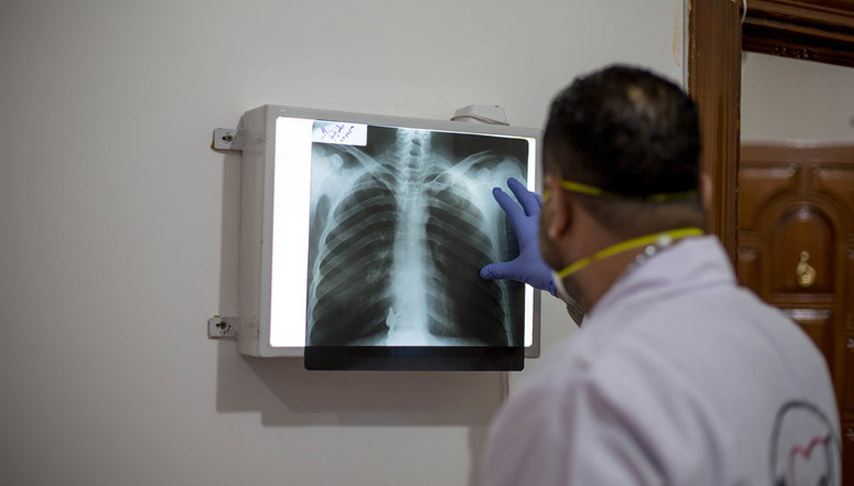In 2018, the rate of TB was 18 per 100 000 people while in 2017, it was 15.8. In 2019, the National TB Programme (NTP) in Damascus reported that 2681 patients had registered for treatment, suggesting a notification rate of 15 for every 100 000 people. The governorates of Damascus, Aleppo and Rural Damascus reported the highest numbers of TB patients (708, 582 and 380, respectively). Based on MoH statistics, Aleppo represents a third of the entire caseload of TB patients in Syria. A survey in Al-Sheikh Maqsood in Aleppo governorate, conducted in July and August 2019, found 300 suspected cases out of 15 000 individuals tested, of which 19 patients were confirmed and treated.
In 2019, 165 NTP staff in Damascus, Homs and Rural Damascus were trained on managing TB patients based on WHO’s global guidelines, conducting laboratory diagnosis and following up on multi-drugresistant TB patients.

Three fully equipped TB mobile clinics have recently been donated to Syria by theMiddle East Response project, which is mobilizing to provide TB services for people in IDP and refugee camps and other closed settings such as prisons. These clinics have been distributed to Aleppo, Deirez-Zor and Rural Damascus governorates. Lengthy international procurement procedures and insufficient funds continue to threaten the future of Syria’s TB centres. A 2018 WHO assessment found that the capacity of laboratories in northwest Syria was weak and human resources were inadequate. There were numerous shortages of TB drugs and the TB case detection rate was low (605 registered cases compared to the 1260 predicted new cases that WHO expects to be detected annually). At the end of 2019, there were three fully functioning TB centres in the northwest, in Afrin, Azaz and Idleb cities, with 59 physicians, laboratory technicians and health staff trained by WHO. In 2019, they diagnosed 314 patients with TB and managed to complete treatment for 114 of them. At the end of 2019, there was still no capacity for active case-finding of tuberculosis patients.
Lengthy international procurement procedures and insufficient funds continue to threaten the future of Syria’s TB centres. A 2018 WHO assessment found that the capacity of laboratories in northwest Syria was weak and human resources were inadequate. There were numerous shortages of TB drugs and the TB case detection rate was low (605 registered cases compared to the 1260 predicted new cases that WHO expects to be detected annually). At the end of 2019, there were three fully functioning TB centres in the northwest, in Afrin, Azaz and Idleb cities, with 59 physicians, laboratory technicians and health staff trained by WHO. In 2019, they diagnosed 314 patients with TB and managed to complete treatment for 114 of them. At the end of 2019, there was still no capacity for active case-finding of tuberculosis patients.








